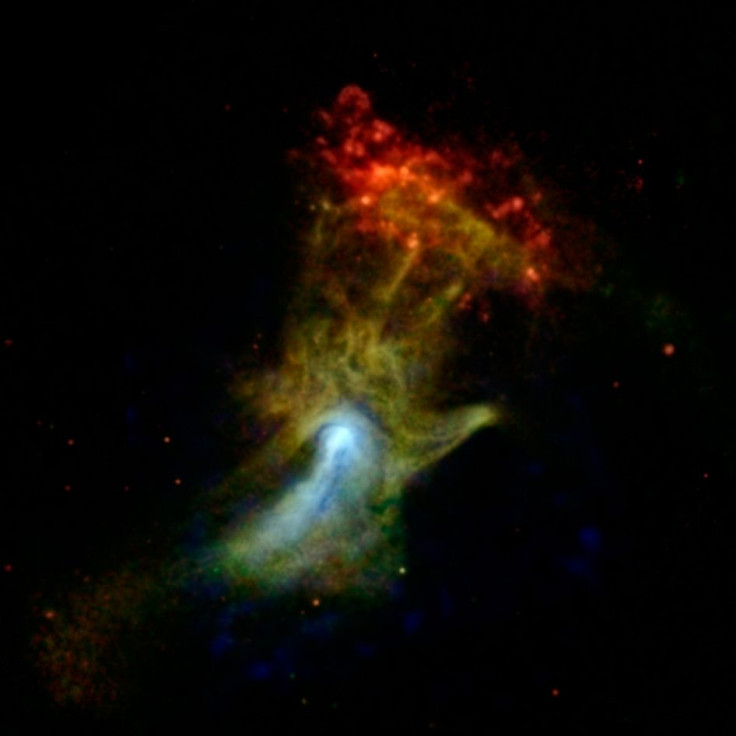Is The ‘Hand Of God’ An Optical Illusion? New NASA Telescope Image ‘Looks More Like A Fist’ [PHOTO]

A new image captured by NASA’s NuSTAR telescope has some people calling the celestial object the “Hand of God.”
NASA’s Nuclear Spectroscopic Telescope Array, which came online June 13, 2012, allows astronomers to study the universe in high-energy X-rays. The new image shows a nebula, which is 17,000 light-years away, powered by a dead star called PSR B1509-58. The dead star, known as a pulsar, spins nearly seven times per second, blowing particles into the remnants of the dead star. These particles interact with nearby magnetic fields, making them produce an X-ray glow that resembles the shape of a hand, LiveScience reports.
"NuSTAR's unique viewpoint, in seeing the highest-energy X-rays, is showing us well-studied objects and regions in a whole new light," Fiona Harrison, the mission's principal investigator at the California Institute of Technology in Pasadena, Calif., said in a statement.
The object is known as a pulsar wind nebula. Astronomers are trying to determine whether the particles interacting in a certain way creates this familiar shape or whether the material naturally resembles a human hand.
"We don't know if the hand shape is an optical illusion," Hongjun An, of McGill University, Montreal, Canada, said. "With NuSTAR, the hand looks more like a fist, which is giving us some clues."
The red cloud that appears above the hand is a separate structure called RCW 89. Astronomers believe the pulsar’s winds could be heating up the cloud to produce a low-energy X-ray glow.
This isn’t the first humanlike image to be seen in deep space. In March 2012, a photo taken by NASA’s Galaxy Evolution Explorer satellite showed an ultraviolet view of the Cygnus Loop nebula that resembled a giant human head. The nebula represents the remnants from a star explosion that had taken place 5,000 to 8,000 years ago.
"The filaments of gas and dust visible here in ultraviolet light were heated by the shockwave from the supernova, which is still spreading outward from the original explosion," NASA explained in a photo description. "The original supernova would have been bright enough to be seen clearly from Earth with the naked eye."
In 2011, a European telescope found a nebula that looked like a fried egg.
Last year, a nebula that resembled a ghost located about 5,000 light-years away was also believed to be the coldest object in the universe with a temperature of minus 458 degrees Fahrenheit.
"This ultra-cold object is extremely intriguing, and we’re learning much more about its true nature with ALMA," Raghvendra Sahai, the NASA Jet Propulsion Laboratory principal scientist who led the research, said in a statement. "What seemed like a double lobe, or 'boomerang' shape, from Earth-based optical telescopes, is actually a much broader structure that is expanding rapidly into space."
© Copyright IBTimes 2024. All rights reserved.






















